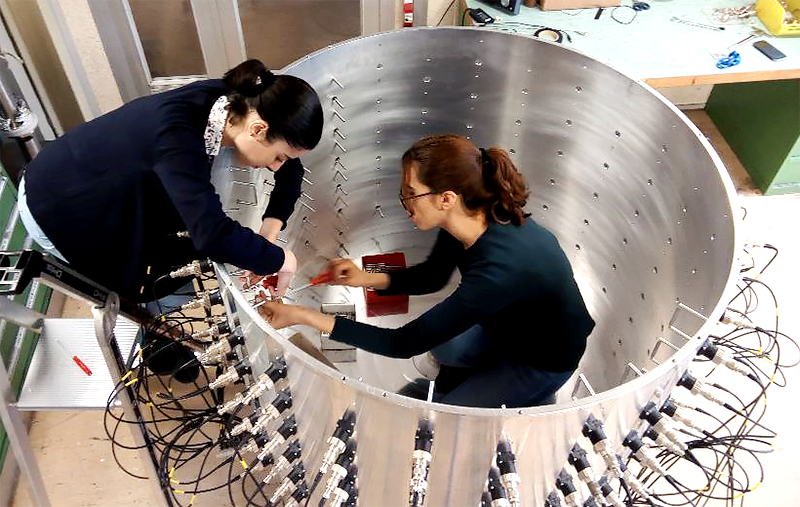
Construction at CERN of a prototype of a 144:1 power combiner to combine 144 solid-state amplifiers
of 1 kW each (Image: Eric Montesinos)
As accelerators change, grow and advance to continue to make scientific discoveries, so too does their need for energy.
Keeping particle accelerators sustainable, minimising their cost and impact on the public energy grid and environment, is a current goal for many particle physicists and engineers. Work Package 3 (WP3) of the EuCARD-2 project, which ended in April 2017, produced a dedicated report on maximising the energy efficiency of certain accelerator systems and alternate uses for energy wasted in the form of heat.
Radiofrequency (RF) systems, commonly used in accelerators to drive accelerating structures in accelerating particles, are prone to energy wastage and often contribute to the overall energy inefficiency of accelerator facilities. As such, WP3’s Task 3 reviewed concepts and designs for more efficient RF systems, whilst Task 2 investigated avenues for making use of or recovering lost energy by other means.
When considering more efficient RF systems, Task 3 focused on supporting the development of three technologies: 1) multi-beam Inductive Output Tubes (IOTs), 2) an improved bunching mechanism for klystrons, and 3) efficient power combiners for use with solid-state power amplifiers in large accelerators.
Compared to klystrons, IOTs have lower losses of energy between pulses or at low input power. However, klystrons may still be improved with new bunching schemes which would extract the RF power from accelerated electron beams more efficiently. In addition, solid state amplifiers can be realised using a single state power combiner, which combine a large number of transistors for higher RF power.
Whilst minimising the initial energy waste is important, so too is identifying how to recover wasted energy, or how to repurpose potential waste for other uses.
Mike Seidel, WP3 Coordinator and head of Accelerator Operation and Development at the Paul Scherrer Institute (PSI), commented, “Energy efficiency and sustainability is becoming an important consideration for modern accelerator based research infrastructures. During EuCARD-2 we found that even matured technologies, such as klystrons, have significant potential for efficiency improvements. At large facilities wasted energy can be used very beneficially for heating purposes, and as the example of ESS shows, the best concepts can be realised if these are included in the planning of a project from the very beginning.”
The members of WP3 Task 2 surveyed 12 accelerator facilities from seven different European countries on their energy consumption and cost as well as cooling and heat recovery methods. The task aimed to obtain an overall understanding of the energy consumption in accelerator facilities and identify beneficial aspects of various set-ups as well as areas requiring improvement.
Both RF and cryogenic systems (the latter of which uses very low temperature liquids for cooling) contribute large levels of energy wastage in the form of heat. Recovering this heat or harnessing its power for additional applications, such as heating treating wastewater, may help further efficiency efforts.
WP3 has identified the need to develop new technology, improve current systems, and pursue methods to recover or repurpose lost energy to ensure the particle accelerators of tomorrow are as efficient as possible.
